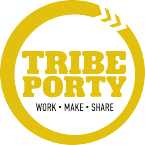Window of Tolerance
Accepting pain in my body for the past 15 months has taught me so much about myself, the way I move through the world, how I have changed over time and who I am yet to become. Before that acceptance came, for 9 months, I kept asking myself and medical professionals what I needed to do to fix it. I have learned a better question is, what is my body trying to communicate and how can I rewire my nervous system?
It has almost been 6 months now that we have all been in lockdown. Not a huge amount of time but definitely significant enough to develop coping strategies and new patterns of thinking. The current pandemic has been traumatic for many. When we experience trauma, it pushes the activation of the nervous system beyond its ability to self-regulate. When a stressful experience pushes the system beyond its limits, it can become stuck on “on.” When a system is overstimulated like this, we can experience anxiety, panic, anger, hyperactivity, and restlessness. A regulated nervous system experiences a stress and calming response throughout the course of a given day. Dr. Dan Siegel of UCLA coined the term “window of tolerance” to describe this space in which we can regulate ourselves without too much effort.
How can you discharge the traumatic stress and transition back into the window of the regulated nervous system? Understanding the function of how people are responding and what may be needed to effectively shift this emotional state is critical for finding effective strategies to shift arousal that don’t lead to further harm to self or others or leave the individual with a sense of shame. This can be referred to as a false refuge in that it provides the “illusion” that it is helping but in the end the problem is still there and maybe even bigger and now we have layered on shame, guilt, a sense of failure etc, as we have responded in a way that we didn’t want to.
A “true refuge” is something we do for ourselves that effectively allows us to shift towards our optimal arousal zone while building competencies and taking care of ourselves in a manner that feels good. There are some common strategies but the key is finding what works for you. With schools starting back, it is also a time to observe and support our young people in getting to know their emotions and equipping them with helpful tools. When providing support to others, it is important to recall that trauma is marked by a loss of control, therefore the ability to establish control and experience a sense of safety and empowerment is of priority in the face of real or perceived threat. For more about supporting a young person, check out this article here.
Good Therapy recommends the following tips;
- Seek safe relationships. Being with someone who is safe and soothing will help your nervous system settle and create a safe space for you to connect and share your experience. We are social beings and we heal in relationship, so if you find yourself isolating or pulling away from social contact, consider instead seeking out people who feel supportive.
- Practice mindful breathing. This trauma response is connected to the brain stem (basic physiological regulation) and the limbic (emotional) brain. Practicing mindful breathing helps connect a basic physiological process (breathing) with your prefrontal cortex (thinking brain), which helps integrate and shift our neurological state. To put that more simply: breathing has a HUGE capacity to calm the brain and regulate the nervous system.
For me, I am happy to share that I had a moment of gratitude this week for the consistent lack of pain. All of the breathing, meditation, homeopathy, nutritional support, writing and talking has gotten me to the other side. I have learned some big lessons and am forever changed, although fully aware the journey is far from over. I also know that I could not have done it alone.
So how can we show up for one another right now? In these times of stress and change, can you be that supportive voice, championing another being back into their window of tolerance? We all know that a small act of listening or kindness can make a big difference and now is the perfect time to be that warm face and warm voice.

